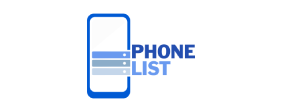In fact, that is what we aim to do in this guide: to show you the basics of SEO from a more technical point of view. We will look at its basics, that is, what it is, what it is used for and how it works. In addition, we will cover the aspects of the website that you should work on to achieve its benefits.
Technical SEO is the part of a positioning strategy that is responsible for working on the optimization of a website so that search engines can crawl and index its content more easily. It is also responsible for improving the user experience .
It is said to be technical because its implementation requires specific knowledge to manage aspects such as:
However, its application is becoming
Increasingly simpler thanks to the various web analysis and management tools that are appearing.Technical SEO : Focuses on optimizing the structure and technical aspects of a website to improve its crawling and indexing by search engines.
On-page SEO : This involves optimizing content and elements within the website itself, such as keywords, HTML tags, content quality, and internal link structure.
Off-page SEO : covers actions external to the website that influence its authority and relevance, highlighting the obtaining of quality backlinks.
The three strategies are interrelated and feed back into each other.
The technical part ensures that the site is crawlable and efficient, facilitating On-page SEO, which relies on optimized and quality content to satisfy the search intent of users and, at the same time, put the site into context and make it easier for crawlers to understand it.
Both improve relevance, authority, and user experience , boosting off-page SEO, which in turn increases the authority of the website through backlinks and external mentions.
What is technical SEO and why is it important?
Technical SEO allows you to achieve several objectives that are key to achieving good visibility in the SERP , among other benefits. In this section we tell you what they are.
1. Improve web positioning
Technical optimizations facilitate crawling and indexing, and therefore , content is better “scored,” or valued, by Google .
If we add to this the fact that the information is valuable to the public, and that the user experience is satisfactory, then it will position itself better and better in the results pages.
In fact, these technical adjustments can make the difference between being visible or invisible.
2. Improve user experience
Aspects such as loading speed, security, and simple and intuitive navigation are key to user satisfaction. And as you know, one of Google’s biggest concerns is that its users are satisfied, so earning their approval starts here.
Like any worthwhile endeavor, managing a WhatsApp number database business has its share of difficulties. The management of user data whatsapp number database responsibly necessitates constant awareness of compliance rules and monitoring due to privacy concerns.In addition, the competition is strong. In order to stand out, you must be creative in both your content and your approach.
Boost digital marketing
Technical SEO is the necessary pillar for a brand to achieve sufficient visibility to attract customers .
Additionally, making content stand out gives more credibility to the business, generating more trust. This, in turn, attracts more traffic and opens the doors to the conversion funnel and different lead capture and nurturing strategies .
One of the missions of technical SEO is to make the website easy to use and understand for visitors . A good experience is the first step to generating preference.
4. It is the basis for other strategies
A website that is well optimized in a technical sense attracts more external links from other relevant websites (backlinks) . This increases the domain and brand authority. As a result, Google understands that this website is more important, since other websites take it as a reference.
How does technical SEO work?
Technical SEO has 5 pillars, which are also the aspects on which search engines base their ranking on websites. Below, we will briefly explain each one:
Crawling : refers to the ability of a website to be found by Google bots. It is the most important pillar.
Indexability : If the page meets Google’s it is everyone duty to develop a solid criteria for content value, it is added to the search engine index and becomes a candidate to appear in the results.
Accessibility : covers the parameters that make the website possible to use, such as architecture, loading time, server performance, among others.
Ranking : is the positioning assigned to pages based on the value of their content and the use of keywords.
Clickability : covers the aspects of optimization that motivate the user to enter the website, such as the title or meta description, appearing in rich snippets, among others.
Key factors for page experience
There are also 5 additional key factors canada email lead within technical SEO that you should know, because they directly influence the 5 pillars we have just analyzed.
PageSpeed Insights and Technical SEO
Page loading speed is a critical factor. Users tend to abandon sites that take too long to load.
Optimizing images, reducing unnecessary scripts, and using caching techniques are some practices to improve loading time.
Check the speed and health of your website with PageSpeed Insights .
HTTPS AND SSL
HTTPS is key to providing a good page experience, as it conveys to the user that this is a secure website .
That “S” at the end of the acronym refers to the security that the hypertext protocol obtains when an SSL certificate is added to it. These are patches that protect the exchange of data between the user’s device and the server that hosts the website they visit.
Google has clearly stated that sites without https will lose visibility compared to those that do. In addition, they will indicate to the user that the website is not secure, which will generate distrust.
Site navigation and structure
A clear site structure and intuitive navigation make it easy for users to find the information they are looking for quickly. This includes:
Well-organized menus.
Relevant internal links .
Breadcrumbs to indicate the location within the site.
Responsive and mobile optimization
In recent years, Google has placed a lot of value on making websites look good on mobile devices , such as smartphones and tablets. This is because more and more users are using these devices to search the Internet instead of computers.
Therefore, a website that is optimized to look good on different mobile devices gains extra points for thinking about offering a good experience for those who use them.
Core Web Vitals
Core Web Vitals are 3 metrics that Google uses to measure how easy it is for users to interact with the content of a website. Let’s see what they are and what they measure:
These are the elements of your website
The domain is the most important URL on your website, as it is one of the URLs that will receive the most traffic and the one that, structurally speaking, is the most relevant.
Therefore, you should choose between the version with or without the “www”. This will avoid duplicate content, Google sending traffic to two addresses and weakening the authority.
Create a sitemap
The sitemap is a document in XML format that lists all the URLs on your website, assigning them a hierarchy and order .
Once you have it ready, you need to submit it to the search engines using Google Search Console.
When you add or remove a URL,
The robots.txt is another document that lists URLs, but in this case it is to indicate which ones you want to be indexed and which ones you don’t .
This is important to avoid wasting crawling time on content that is not relevant.
Take advantage of your Crawl budget
Also known as crawl time , crawl budget is the amount of time the crawling bot spends analyzing your URLs.


